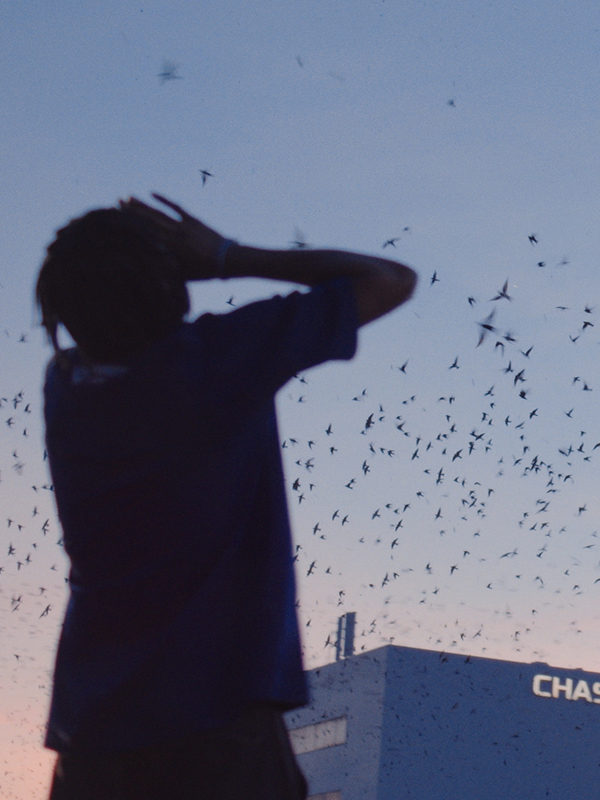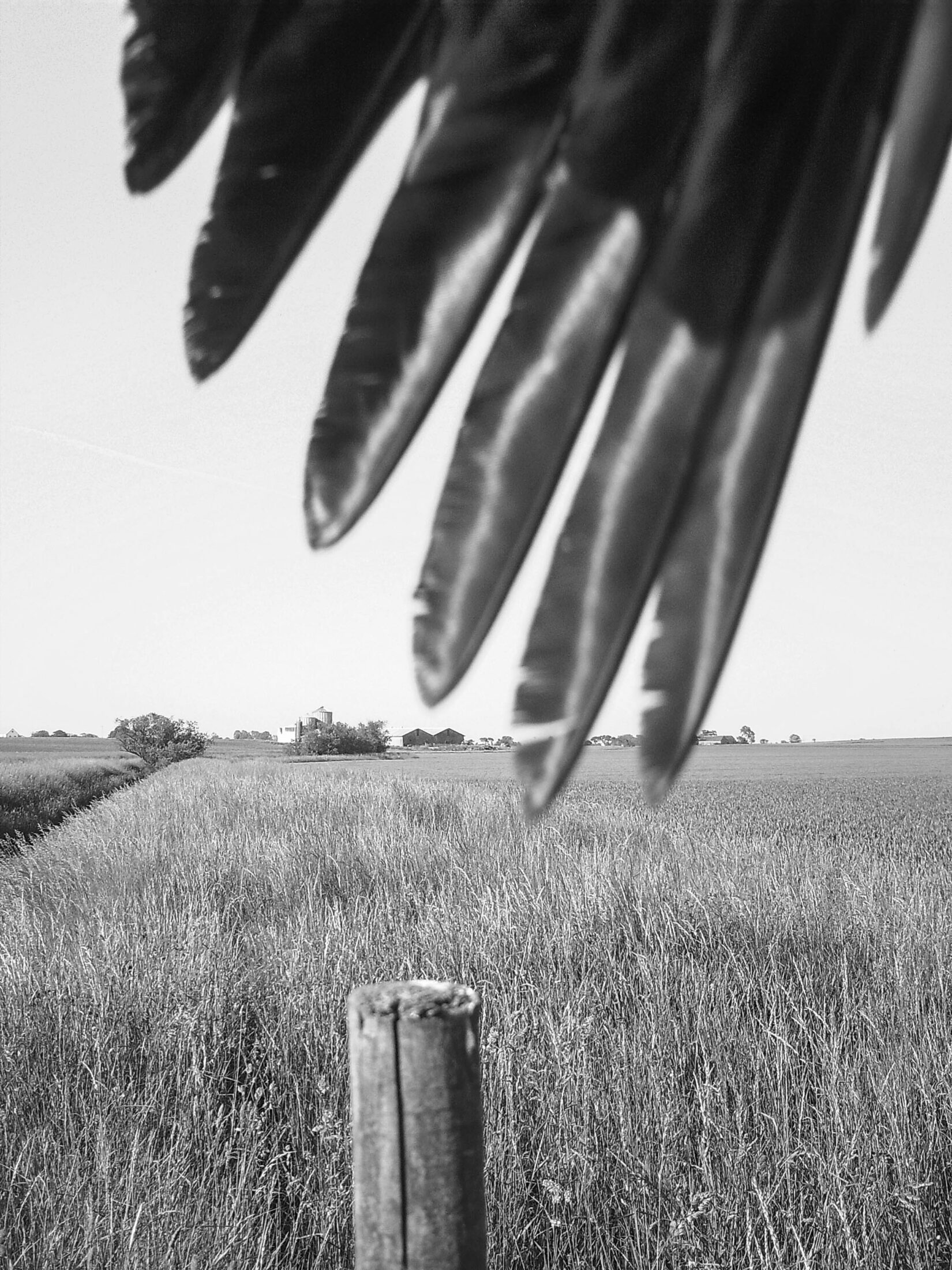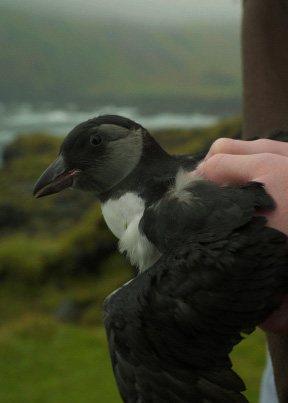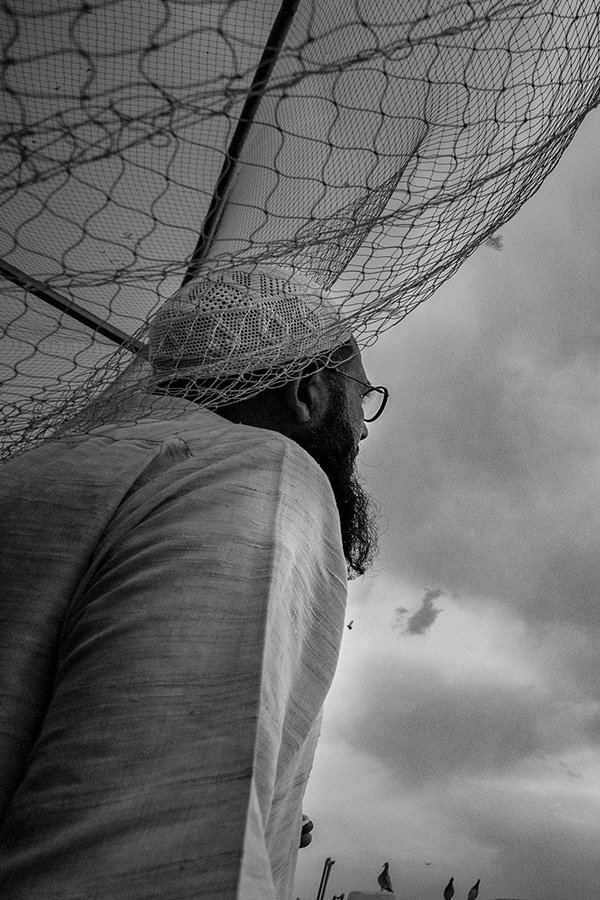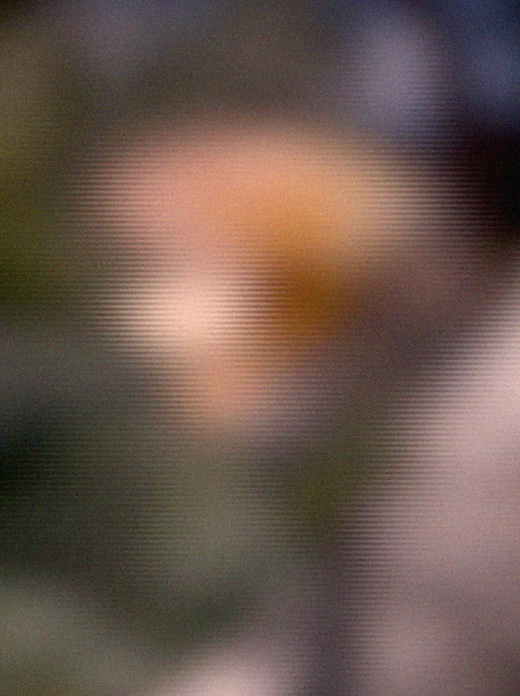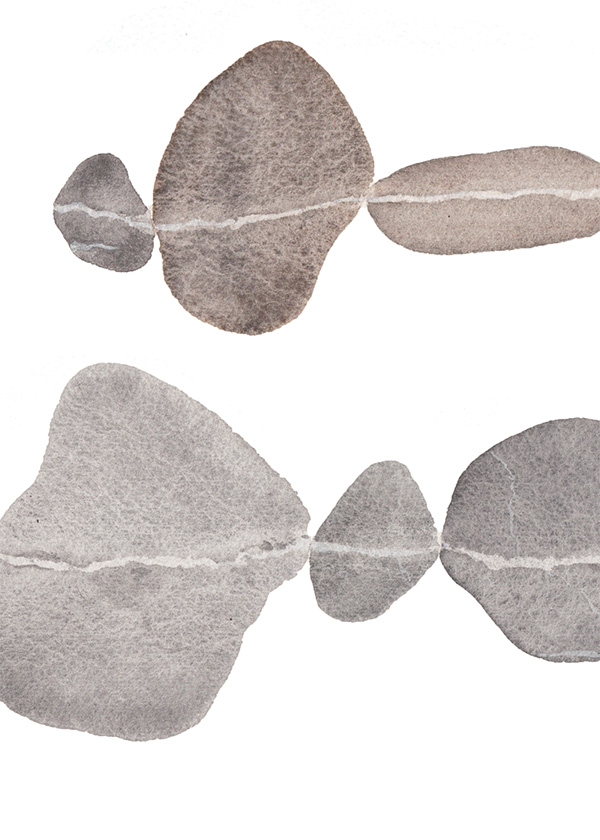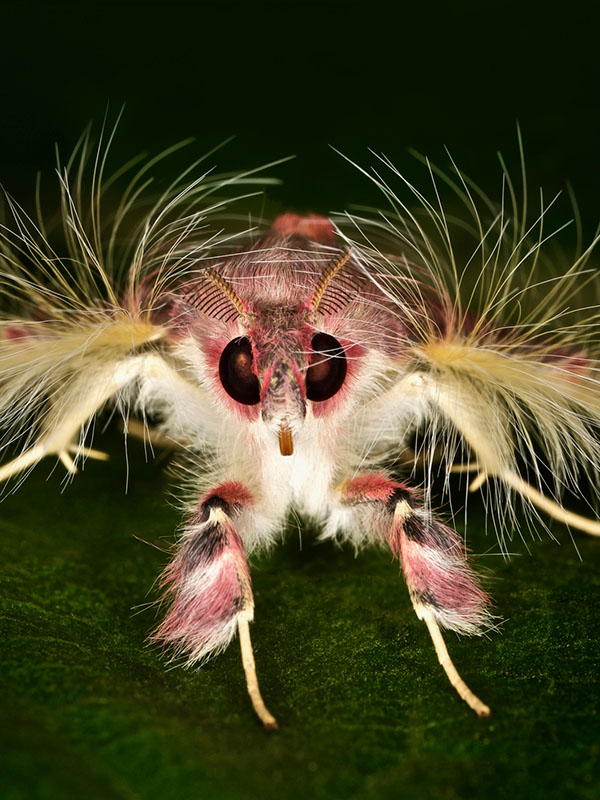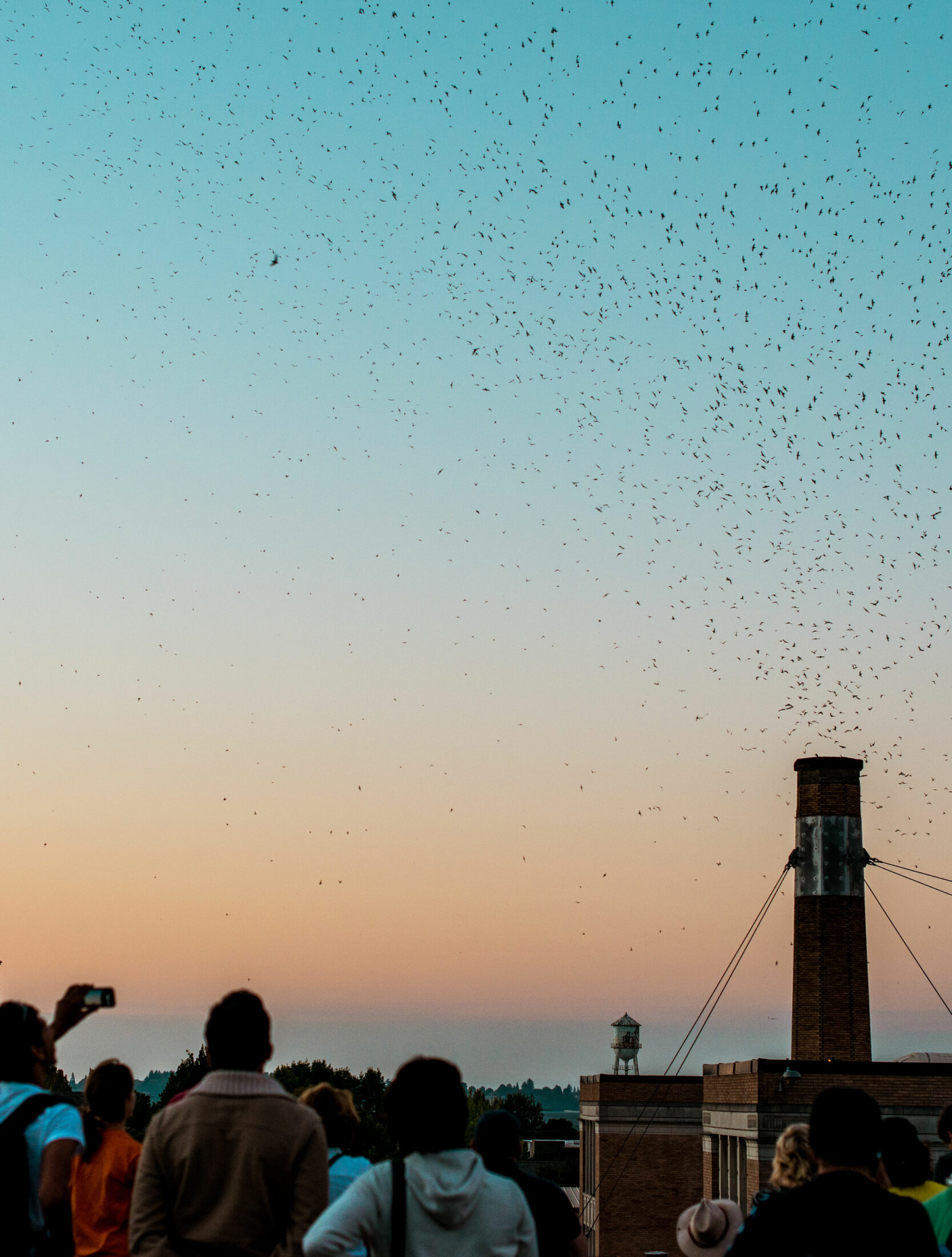
Chase Elliott Clark / Flickr
There Is No Show More Beautiful Than This
Tove Danovich is the author of Under the Henfluence: Inside the World of Backyard Chickens and the People Who Love Them. Her writing regularly appears in The Washington Post, The Atlantic, The Guardian, and others. She writes a column about the natural world for Earth Island Journal and publishes a weekly newsletter, A Little Detour, on Substack. She lives in Portland, Oregon.
Every autumn, hundreds of thousands of tiny Vaux’s swifts migrate from their nesting grounds as far north as British Columbia to their overwintering homes in Mexico and South America. Stopping over each year in a schoolhouse chimney in Portland, Oregon, the birds offer a moment of joy amid uncertainty.
Last night, I gathered with hundreds of strangers in Portland, Oregon, to watch a strange kind of show. Some people arrived as early as 5:30 to get a good spot, others came later, just as things were getting exciting. We brought camp chairs and picnic blankets. We came alone or with friends or with lovers, kissing in the grass. We booed and applauded and shouted warnings when the villain of the night’s story was up to no good. The play was unscripted. The actors weren’t listed in any playbook. The stars of the night’s entertainment were thousands of tiny birds, Vaux’s swifts, who funneled into a school’s chimney to spend the night. I can’t stop going back—it’s a little different every time.
It’s a grand story. Every fall, hundreds of thousands of birds migrate from breeding grounds as far north as British Columbia to overwinter in Mexico and South America. The birds are tiny, no more than four and a half inches long. Yet they fly fifty miles a day.
Naturally, swifts would sleep huddled up together on the inside of dead trees, but there are fewer of those than there used to be and fewer migrating swifts too. Since the 1960s, Vaux’s swift numbers have declined by fifty percent. Fires burned some of these hollow trees; logging has taken others. Humans don’t like to leave dead wood standing, no matter how helpful it is for wildlife. Luckily chimneys, made out of rough stone or brick, are a good substitute. The stone bakes in the sun all day and gently radiates warmth to the sleeping birds overnight. But not all are good places for sleeping or nesting swifts. Modern chimneys are too slippery for their clinging and some people cap their old brick chimneys to keep the noisy birds out. Yet many welcome the feathered overnighters, pushing off chimney cleaning or fires until the birds are gone. Swifts remember this and return to good roosting sites year after year.
In the 1980s, the swifts discovered the three-story brick chimney at Chapman Elementary School. The next year, more swifts showed up, then more. Students at the school wore jackets in class on cold fall days rather than turning on the furnace and incinerating the birds. It’s an image I like to think about when I watch the swifts—first-graders learning in giant coats, protecting creatures even smaller than themselves. Eventually a nonprofit paid to have the school’s heating upgraded, the chimney decommissioned and strengthened. Its only purpose now is to house the birds.
For the last three years, I’ve spent as many September nights watching the swifts as I can. It never fails to move me—the spectacle of the birds and the awe of the people who come to watch them. Last year, when I separated from my husband, I went once a week—volunteering on a couple nights to tell people more about them. I was lonely for the first time in a decade. The birds filled the sky.
I’d step between picnicking people on the hill above the school, looking for curious faces. I could smell the sweet scent of the peanut butter trees blooming nearby. “Have you been here before?” I’d ask. “Would you like to hear some swift facts?” I felt like a proselytizer making a conversion. I showed them pictures of the swifts, snuggled inside a chimney like chevrons—a wing tucked over a head tucked over a wing. I told some that I’d seen the birds up close. In summer I volunteered at the wildlife rehab center and fed baby swifts who’d been abandoned or injured—holding mealworms in my tweezer-beak and dropping them into the birds’ open mouths. Their sooty feathers reminded me of bats more than birds. Their big black eyes filled their faces. I wanted each of them to live long enough to join the dance in the sky.
I told the watchers that in 2004 someone counted 35,000 swifts going into the chimney. That lately the numbers here had been far lower. In 2023, 11,000 were counted on the busiest night. Insect numbers were declining and so too was the number of swifts. One bird can eat as many as 20,000 insects a day, needs to eat that many to fly so far on small wings. Thanks to climate change, the birds come a little earlier every year. I didn’t know what this might mean for their futures. I only knew that I’d come to love these birds.
“Did you know that they spend most of their lives in flight?” I’d ask. They only stopped flying to raise their young and sleep. Their bodies are so adapted for the air that they couldn’t actually perch on the ground or a tree branch, their feet were only good for clinging on vertical surfaces. I didn’t tell the strangers that I spent my days wondering if I could manage being alone again. That my future, once so settled, had become an open question. That when I left at the end of the night, I wouldn’t text anyone to say that I was on my way home. I’d return to an empty house.
Sometimes a Cooper’s hawk or peregrine falcon arrived to prey on the swifts. The crowd booed at his appearance. “That’s not fair!” one kid said after an adult explained that the bird perched on the edge of the chimney was waiting to pluck a swift off like a piece of popcorn. There were more predators this year than I’d ever seen before. Every night was roulette for the swifts who must have known that one or two wouldn’t make it to the next morning. Last night, a hawk flew into the flocking swifts and the crowd jeered. “Go home!” a man yelled. When the hawk continued on, empty-clawed, I heard someone else yell, “Prick!” All of us were caught up in the drama of the birds.
Every night, when the sun began to set and I only saw a sprinkle of bodies in the sky, I wondered if they were coming. I was prepared for disappointment. Then I’d see them flying in from all directions. Suddenly, the air was full of birds. “Don’t open your mouth when you look up at them,” I warned people. Being pooped on by a swift was a possible price of admission.
They murmurated in the sky, flying apart and almost disappearing until they came together again in a wall of swifts, a tornado of swifts, an undulating ribbon of swifts gliding in the air. Their high-pitched, insect-like cheeping got louder. The human crowd, boisterous and talking, always fell silent as it got closer to sunset. We held our breaths and waited. This was the part I loved most: knowing what was coming next but not when it would happen or how long it would last. I knew there was a lesson to take from that into my own life, but I couldn’t, I couldn’t. I watched the birds instead.
The flocking swifts dropped closer to the chimney. They circled above it as if warming up before going inside. They seemed to whisk over the rim before returning to the air. It was almost sunset. The sky was dramatic, red and orange.
I couldn’t help but think of the first time I’d come to see the swifts, with my mother and my now ex-husband. Last year, I spent my birthday on the hill with friends, who sang the happy birthday song while I blew out candles. I’d come alone more times than I could remember but never felt lonely talking about the birds. Last night, I put my hand into the hand of a new love as we faced the chimney. Next year was unfathomable except for one thing: I knew I’d be with the swifts again. If not at this roost site, then another one. Sometimes swifts, like people, need to move on.
The funnel of swifts tightened and then, too fast for me to notice, the first birds went inside. Stuck to the ground, we yelled. This was the dramatic climax we had been waiting for. They looked like a cloud of smoke in reverse. Some swifts flew off for other roosts, deciding to leave the group to go their own way, their reasons mysterious. We waited until the last swift had tucked itself into the chimney for the night. Then, politely, someone started clapping and the hill of us joined in.
I wondered if they could hear us applauding, if they could feel our devotion.
There was nothing better than being their witness. No show more beautiful than this: the sunset, a sky full of birds, all of us coming together in the wonder of the moment.
